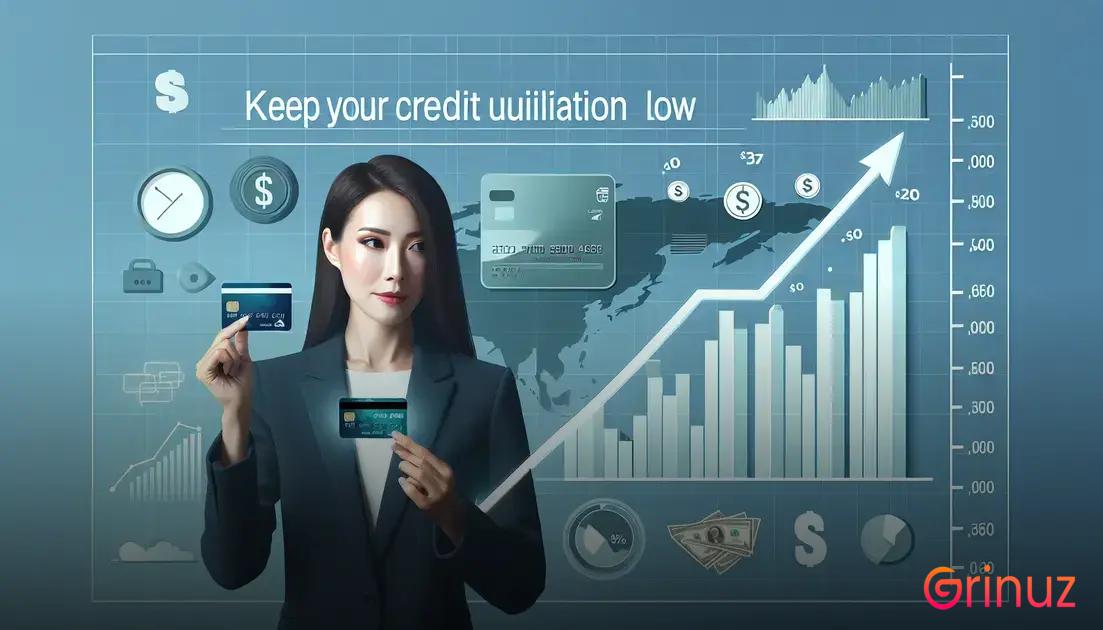Learning how to build credit with a credit card can be a game-changer for your financial future. By understanding the basics of credit, choosing the right card, and practicing responsible habits, you can effectively improve your credit score.
Understand the basics of credit
Credit is an essential part of personal finance that impacts various aspects of life, from renting an apartment to securing a loan. To get started, it’s crucial to understand the fundamentals of credit.
Credit is the ability to borrow money or access goods and services with the understanding that you’ll pay later. It involves a contract between a lender and a borrower, where the borrower agrees to repay the borrowed amount plus any interest.
Your credit score is a numerical representation of your creditworthiness, usually ranging from 300 to 850. Lenders use this score to evaluate the risk of lending to you. A higher score indicates better creditworthiness.
Credit scores are calculated based on various factors:
- Payment History: This is the most significant factor and includes on-time payments.
- Credit Utilization: This refers to the amount of available credit you are using. Keeping it below 30% is recommended.
- Credit History Length: The longer your credit history, the better.
- New Credit: Opening several new credit accounts in a short time can lower your score.
- Credit Mix: Having various types of credit accounts can positively impact your score.
By understanding these basics, you are better equipped to build and maintain a strong credit profile using your credit card effectively.
Choose the right credit card

When it comes to building credit, selecting the right credit card is crucial. You need to consider several factors to ensure it aligns with your financial goals. Firstly, look at the annual fees. Some cards charge yearly fees, but many credit-building cards are fee-free.
Next, check the interest rates. Cards designed for building credit often have higher interest rates, so it’s essential to understand the APR before committing. Look for cards with introductory offers on interest rates.
Another important factor is the rewards and benefits offered. Though your primary goal is to build credit, rewards like cashback or travel points can add value to your spending. Compare the benefits offered by different cards to see what suits your lifestyle.
Consider the credit limit as well. Starting with a low limit can help you manage your spending and ensure you don’t overspend. Gradually, as you build a positive payment history, you can request a higher limit.
Finally, review the card issuer’s policies on reporting to credit bureaus. Ensure the issuer reports to all major credit bureaus so your responsible usage positively impacts your credit score.
Take your time to compare different credit cards to make an informed decision that aligns with your financial goals and helps you build credit effectively.
Make timely payments
One of the key steps in building credit with a credit card is to make timely payments. This effort reflects positively on your credit history and greatly enhances your credit score. When you consistently pay your credit card bills on time, it demonstrates your reliability and financial responsibility to lenders.
Set up payment reminders or enable automatic payments to ensure you never miss a due date. Late payments can lead to penalties, interest rate increases, and a negative impact on your credit score.
It’s not only about paying on time but also paying at least the minimum amount due. This will prevent your debt from growing due to interest and fees. Remember, your payment history makes up a significant portion of your credit score calculation, so keeping it spotless is crucial for building good credit.
Keep your credit utilization low

Why Low Credit Utilization Matters
Maintaining a low credit utilization rate, ideally below 30%, is crucial for a healthy credit score. Credit utilization is the ratio between your credit card balances and your credit limits. By keeping this ratio low, you signify to lenders that you are a responsible borrower.
Practical Steps to Lower Utilization
Firstly, aim to pay off your credit card balances in full each month. This won’t just help you avoid interest charges, but will also maintain a low utilization rate. Secondly, consider requesting a higher credit limit from your issuer. A higher limit means the same balance will represent a smaller portion of your available credit.
Distribute Your Spending
Another strategy is to spread your expenses across multiple credit cards. This keeps any one card from nearing its limit. Additionally, try making multiple payments each month. This reduces the overall balance reported to credit bureaus.
Avoid Closing Unused Accounts
While it might seem wise to close unused credit card accounts, keeping them open can positively impact your credit utilization rate. The more available credit you have, the lower your utilization ratio will be, assuming your balances don’t increase.
Monitor your credit score
Regularly monitoring your credit score is vital for understanding your financial health and tracking your progress as you work on building credit. Many free tools and services can help you keep an eye on your score without costing you a dime. Check your score at least once a month to catch any errors or unauthorized activities early.
When reviewing your credit score, it’s helpful to understand the factors impacting it, such as your payment history, credit utilization, and the age of your credit accounts. This insight will empower you to make informed decisions and take proactive steps in improving your credit profile.
Besides free tools, some credit card issuers offer credit monitoring services as a part of their benefits. Enrolling in these services can provide additional insights and personalized tips on how to improve your score.
Staying informed about your credit score will not only help you in maintaining good credit but also prepare you for any major financial decisions, such as applying for a loan or mortgage. Regular monitoring, coupled with proactive measures, will set you on the right path to a solid credit standing.





